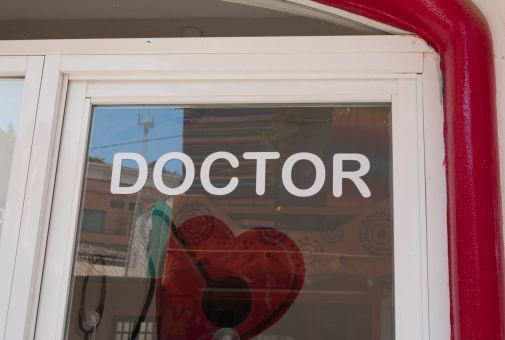
California’s community clinics are in an odd place. They’re reeling from state budget cuts, struggling to make ends meet, while at the same time preparing for what could be a major expansion as the federal health reform bill rolls out.
The hundreds of clinics play a crucial role in providing health care for the uninsured and under-insured, in urban neighborhoods and rural outposts. And when the federal Affordable Care Act widens eligibility for Medi-Cal in 2014, the clinics will be the health care destination of choice for thousands of additional patients.
This week the clinics – also known as community health centers — got some rare good news. The Blue Shield of California Foundation awarded $7 million in new grants to the clinics to bolster their operating budgets and encourage innovation in the run-up to the new reality under health reform.
This is an incredible commitment that they have made,” said Carmella Castellano-Garcia, president and CEO of the California Primary Care Association, which represents about 800 clinics and health centers statewide. “It’s more important than ever that these investments happen, with health care reform on the horizon.”
Up to $5 million of the grant money will go to provide core support funding for licensed community, free and tribal clinics that serve uninsured Californians. Another $1.8 million will go to top-performing clinics seeking to position themselves in the post-reform marketplace. A special grant of $138,000 will go to the Shasta Community Health Center to improve it use of electronic medical records.
Peter Long, president of the Blue Shield of California Foundation, said the foundation’s mission is to help provide affordable, accessible health care for all Californians.
“We think the clinics are a good vehicle for doing that,” he said.
Long acknowledged that the $5 million the foundation is giving for core support is just a small fraction of the clinics’ overall budget and won’t even make up for the cuts in state funding the clinics have suffered in recent years. But Long and Castellano-Garcia said the money is important because almost all of a typical clinic’s budget is restricted to a particular expense. This money can be used on the margin to meet immediate needs at the discretion of clinic managers.
“This is to keep the lights on and the doors open,” he said.
At the same time, Long said, the foundation wants to help the clinics plan for their changed role under the health reform law. Until now, free clinics and community centers have served mainly the uninsured and the poor. But once nearly everyone is insured, they will have to compete with other providers for the business of insured clients, and Long said the foundation wants to see them succeed.
“There are a couple of different scenarios,” he said. “There is a scenario where they are very successful at integration with other health care providers, attractive to their clients because they are culturally competent, service-oriented, embedded in the community.
“There is another scenario where health centers do their best and people go to bigger clinics and other alternatives. I don’t think it’s been determined what the outcome is going to be.”
The clinics have been caught in a whipsaw in recent years. Former Gov. Arnold Schwarzenegger used his veto pen to delete $35 million from the budget that was slated to go to clinics that serve farmworkers, Native Americans and the uninsured. The clinics lost another $52 million when the state eliminated dental care for adults as part of the Medi-Cal program.
But the federal health reform act includes $11 billion for expansion of community clinics nationwide, and California hopes to get at least $1 billion of that money. More will be coming through reimbursement for services provided.
But in the meantime the state is preparing to serve more clients through a new program meant to serve as a bridge to 2014 when the health reform law takes effect, and the clinics have not been assured a role in that program.
The question is whether the clinics will be included in the networks the counties are creating?” Castellano-Garcia said. “This is about keeping the clinics alive and allowing them to thrive during this critical transition time.”





